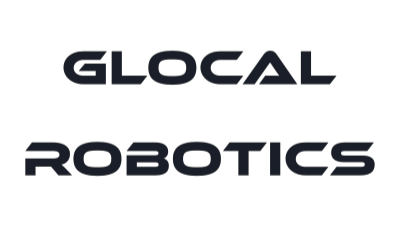By Renato Cudicio, MBA, President of Glocal Robotics Europe
The deployment of our autonomous security robot THALAMUS in the field in France to perform surveillance missions previously performed by agents is a real paradigm shift in the security industry.
But what is the real impact of the introduction of advanced robotic technologies on organizations and how do we prepare for it?
We don’t yet have any solid studies in the security industry on which to base our analysis. Only the defence sector and particularly, obviously, the U.S. military has some perspective on the benefits and challenges of integrating robots – flying, rolling, and sailing – into its strategy, i.e., taking into account everything from training to operational maintenance to modifying missions based on individual capabilities.
So, as our autonomous robot does missions for which it is accountable, it is worth re-reading the Unmanned Campaign Framework report published earlier this year by the US Navy. It contains thoughts and directions that can only be of use to the security industry, which is, in turn, beginning its great robotic shift.
If we exclude the geostrategic considerations of the U.S. Army and read it from the perspective of a security professional, we find the same reasons for entrusting missions to robots: to increase the capacity and performance of the resources deployed in the field; to allow us to be as close as possible to the risks – without any risk for the agents; and thus to maintain a tactical and strategic advantage.
For the US Navy, as for industry, the question is no longer whether to massively deploy autonomous or mixed human-machine teams, but how fast to do so and how to make this complex process efficient.
The report highlights, without insisting, the importance of human resources in the achievement of this transformation. Indeed, for a large organization, whether military or civilian, the introduction of robots profoundly modifies the operating modes, the skills required by the people interacting with these machines, and the functioning of maintenance processes.
Let’s remember that the increase in personnel skills is inversely proportional to the degree of autonomy of the machines. The report presents a five-level gradation of human involvement, which also applies to industry:
- Human Operated – a conventional surveillance patrol
- Remote operated – typically a drone inspection
- Human Supervised – multiple robots in partial autonomy controlled remotely
- Human-machine Teaming – use of robot sensing and carrying capabilities in a mixed team or task allocation
- Near-Independant Autonomy – the robot performs missions on its own and decides what actions to take depending on the type of incident
In this scale, the more autonomous the robot becomes, the higher the level of expertise required to program, control and maintain it in operation. This is an even greater challenge for the security industry, because, due to profitability constraints and lack of personnel, it must quickly aim for the greatest possible autonomy.
But the level 5 of Near-Independant Autonomy comes at a high cost. Level 4 of Human-machine Teaming is not cost-effective and does not solve the problem of lack of human resources. Therefore, it is the largest organizations that will be able to quickly take advantage of the situation by deploying a fleet of level 3 robots, i.e. a series of robots in partial autonomy, therefore less costly to program, supervised by a single human capable of remotely solving the complex problems encountered by the robots in his fleet.
As an example, our robot THALAMUS is able to work at all levels, from remote control to almost complete autonomy. By default, the machine can move autonomously on a given terrain, perform intrusion detection activities, trigger alarms or broadcast pre-recorded messages, and transmit video streams. Thus, the THALAMUS can operate at almost no additional cost in level 3 or level 5 as long as the missions do not require it to acquire new knowledge.
Additional investments are made when the company wants to implement complex scenarios involving deep learning and decision-making processes based on specific AI algorithms. This proportion of customization that makes the robot’s autonomy level evolve from level 3 to level 5 is, therefore, to be evaluated in a purely economic logic of return on investment, leaving aside the desire to have a science-fiction robot patrol its perimeter in order to privilege a robotic tool, such as the THALAMUS, used to the best of its abilities.

